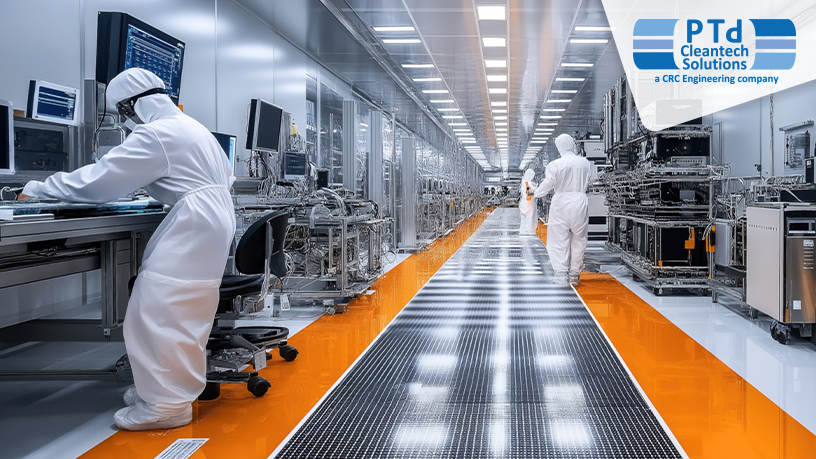Cleanrooms are essential environments in industries where microscopic particles can put quality, safety and performance at risk. It is not an ancillary consideration in industries that range from the pharmaceuticals business to aerospace to high-precision industries such as electronics and semiconductors. Cleanroom classification is fundamental to how those businesses operate.
Knowledge of what differentiates each cleanroom class from the former FED-STD-209E standard through the current ISO 14644-1 scheme assures companies of regulatory compliance, enhances performance optimisation and upholds quality standards at the highest level.
Understanding Cleanroom Classification Systems
Cleanroom classification systems establish the permissible quantity of airborne particles of a certain size per cubic metre or foot of air. The older specification, FED-STD-209E, employed terminology such as Class 100 or Class 1000, with the number indicating the largest number of allowed particles, 0.5 microns and larger per cubic foot. Now technically no longer in effect, this standard remains widely cited in industries that have traditionally used its terminology.
The ISO 14644-1 standard, which is now adopted worldwide, categorises cleanrooms with ISO Class numbers from ISO 1 (cleanest) to ISO 9 (least clean). ISO 5 is approximately equal to Class 100, and ISO 8 is equal to Class 100,000. All the classifications cater to various industry requirements. For instance, ISO 5 facilities are typical for sterile pharmaceutical filling zones and semiconductor manufacturing areas, while ISO 7 or ISO 8 rooms can be employed for less demanding phases of production.
Cleanroom design, such as air system flow, HEPA filters, and pressure differentials, has to be adapted to accommodate the intended classification. It is here that Semiconductor Facility Engineering enters the picture since semiconductor production necessitates the tightest controls of contamination and utmost precision in the control of the environment.
Why Classification Matters for Different Industries
Various industries need various degrees of cleanliness depending on the sensitivity of their products and processes. In the semiconductor industry, one micron-sized particle can be enough to make a device fail or decrease yield, so ISO 5 or cleaner environments are normal for most operations. These cleanrooms typically utilise sophisticated air handling systems, laminar airflow installations and strict gowning procedures to shield wafers from any type of particulate contamination.
Medical device production would utilise ISO 7 or ISO 8 cleanrooms for packaging and assembly, as opposed to the above. Pharmaceutical production adheres to specific cleanroom classes for sterile and non-sterile products based on relevant regulatory standards. Aerospace and optic industries often also need high-end clean environments to avoid damage or defecting sensitive components.
Businesses involved in Semiconductor Facility Engineering should tread these categorisations with caution. Being ISO-compliant isn’t all about hygiene but also ensuring that documentation, monitoring and validation procedures are in place. This guarantees product quality and regulatory compliance and reduces the risks of contamination or product recall.
The Role of Engineering in Meeting Cleanroom Standards
Obtaining and sustaining the appropriate cleanroom classification is not just a construction issue. It requires accurate engineering, continuous monitoring and consistent maintenance. HVAC systems have to be properly engineered to provide the right number of air changes per hour and to control temperature, humidity and pressure differentials. HEPA or ULPA filters need to be accurately chosen and regularly tested. Surface finishes, lighting, and people flow all need to play a part in the preservation of a controlled environment. This is particularly the case in Semiconductor Facility Engineering, where cleanroom standards are some of the highest in the world. In this case, engineering skill guarantees that the physical plant serves not just the initial construction but also the long-term operational effectiveness of the facility. All from sub-fab configuration to chemical delivery systems is coordinated with cleanroom performance in consideration.
Facilities which undertake Semiconductor Facility Engineering gain by a systems-centric approach, whereby engineering design, process workflow and environmental control all get coordinated. This system’s orientation enables flexibility in operations and scaling for future technological requirements. With semiconductor technology advancing day by day with nanometre accuracy, the call for higher-class cleanrooms and strong engineering backup will grow exponentially.
Cleanroom classification is more than a regulatory box to check; it is an imperative that affects product quality, business success and company reputation. Whether you are in the pharmaceutical, aerospace or electronics industries, knowing cleanroom standards from Class 100 through ISO 8 enables your company to be aligned with industry standards. With increasing demand for precision and performance, particularly in industries demanding Semiconductor Facility Engineering, investment in the correct cleanroom strategy is essential for long-term success.

